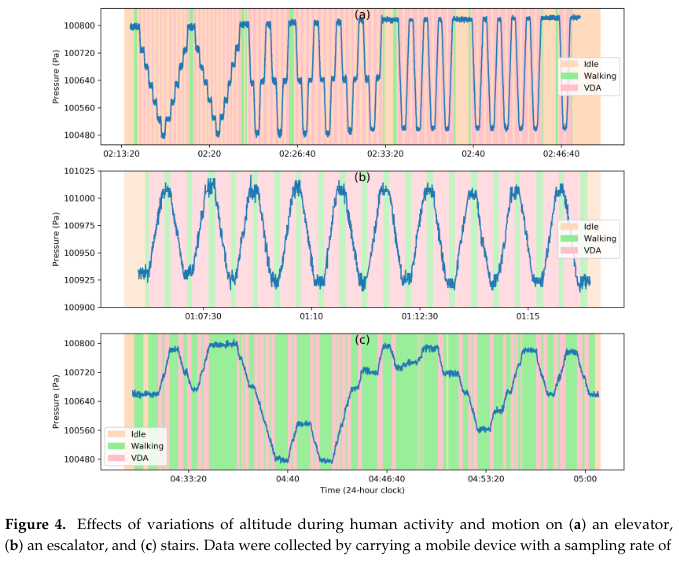
Paper
Manivannan, A., Chin, W. C. B., Barrat, A., and Bouffanais, R. (2020). On the challenges and potential of using barometric sensors to track human activity, Sensors. 20(23): 6786.
Abstract
Barometers are among the oldest engineered sensors. Historically, they have been primarily used either as environmental sensors to measure the atmospheric pressure for weather forecasts or as altimeters for aircrafts. With the advent of microelectromechanical system (MEMS)-based barometers and their systematic embedding in smartphones and wearable devices, a vast breadth of new applications for the use of barometers has emerged. For instance, it is now possible to use barometers in conjunction with other sensors to track and identify a wide range of human activity classes. However, the effectiveness of barometers in the growing field of human activity recognition critically hinges on our understanding of the numerous factors affecting the atmospheric pressure, as well as on the properties of the sensor itself—sensitivity, accuracy, variability, etc. This review article thoroughly details all these factors and presents a comprehensive report of the numerous studies dealing with one or more of these factors in the particular framework of human activity tracking and recognition. In addition, we specifically collected some experimental data to illustrate the effects of these factors, which we observed to be in good agreement with the findings in the literature. We conclude this review with some suggestions on some possible future uses of barometric sensors for the specific purpose of tracking human activities.
Read article here:
- Official website: On the challenges and potential of using barometric sensors to track human activity, Sensors,
- ResearchGate: Abstract and full text (on request or downloadable directly),
- Please contact me (by Gmail ).
